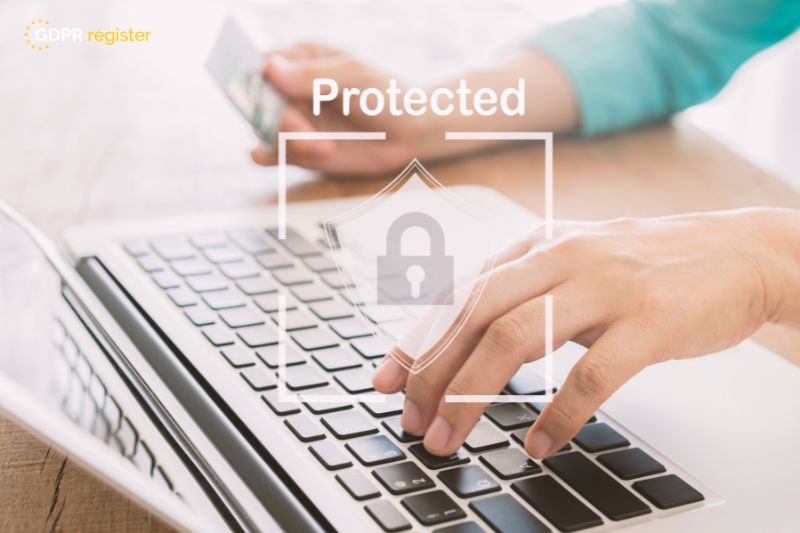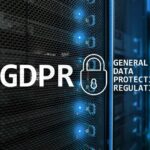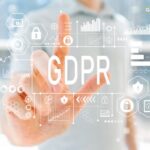The General Data Protection Regulation (GDPR) is a European regulation establishing the framework for personal data protection of individuals in the EU and EEA. It applies to organisations processing personal data, regardless of the company size and location. GDPR sets out the requirements on how companies can conduct their data processing operations to ensure the rights and freedoms of individuals are protected.
Businesses are required to comply with the established requirements and also be able to demonstrate accountability.
One accountability measure is demonstrating that all necessary documentation regarding data processing is drafted and also up to date in case needed.
A data map is considered to be the foundational document that envisions different data flows. Even though the GDPR does not explicitly state a data map, it is helpful in supporting several compliance requirements.
Data flows can be described as a company’s bloodstream – tracking where personal data comes from and how it is processed, retained and shared.
What exactly is a GDPR data map?
A GDPR data map provides a comprehensive overview of how data flows inside and outside the company. It is also crucial for the whole company’s data governance, risk and privacy strategy and data protection compliance.
It starts with how and what personal data flows to the company, how it is collected, what departments and which employees process it, how and where it is stored, how it is shared, and how long it is retained.
Why is a data map important?
With data flow mapping, other company level business processes and privacy processes are seamlessly carried out because all information related to data processing is easily available.

In more detail, it can assist with several critical privacy operations.
- Data Subjects’ Rights Fulfillment
According to the GDPR, data subjects have several rights to ask different specific questions from the data controller. These are known as a DSAR or Data Subject Access Requests. If such a request is received by the company, the company needs to establish where the data is located and provide details of the processing activity in a timely manner and within a timeframe.
- Data Protection Impact Assessments
In special cases, the data controller is required to draft a Data Protection Impact Assessment (DPIA). The DPIA is a special type of risk assessment that companies should be familiar with. Without the DPIA, the company is not allowed to continue processing personal data. The DPIA describes different aspects of the processing, and a data map clarifies these aspects. The risk assessment evaluates aspects that affect the data subject’s rights and freedoms.
- Breach Management
Data breaches can happen suddenly, and there may be very little time to act accordingly and gather the details of data processing. Therefore, a data map enables to locate which data has been affected quickly and ultimately help companies comply with the data breach notification 72h deadline.
- Records of Processing Activities
Companies have an obligation to maintain Records of Processing Activities under the article 30 of GDPR. A data map is helpful in documenting all data processing activities, data categories, data subject categories, retention periods, processing purposes and data sharing with third parties.
- Third-Party Vendor Management
A data map helps to streamline the information on what external parties are used for data processing, making it also a risk-mitigating measure for third-party risk management.
How do I create a data map?
Creating a GDPR data map involves several steps to ensure that an organization comprehensively tracks the flow of personal data. Here’s an outline of the general steps involved.
Step 1: Identifying the scope of data processing activities. As the first step in the process, start by identifying all types of personal data that your company collects and processes.
Step 2: Determining data types and processing activities. Document where personal data comes from and track how the data is processed within your company.
Step 3: Identifying data flows within and outside the organization. Identify all points where personal data is collected and document all individuals and third parties that have access to the data.
Step 4: Assessing data processing purposes and legality. Under GDPR, businesses must assess and document the purpose and legality of each data processing activity to ensure compliance. Every time personal data is collected or processed, it must serve a specific and legitimate purpose, and the company must establish a legal basis for doing so.
Step 5: Assessing security measures. Ensure that appropriate technical and organizational security measures (e.g., encryption, access controls) are in place to protect personal data from unauthorized access or breaches.
By following these steps, businesses can create a comprehensive data map that provides visibility into their data processing activities and supports GDPR compliance.

Key Components of a GDPR Data Map
A GDPR Data Map provides organisations with a structured view of how personal data is processed throughout its lifecycle, from collection to deletion. It also established transparency and accountability in addition to helping companies maintain control over data processing activities.
The following key components of a data map can be highlighted as vital elements:
- Data subjects and categories of personal data.
- Data processing activities and their purposes.
- Data storage locations and data transfer mechanisms.
- Data retention schedules.
- Data protection measures and security protocols.
These 5 key categories cover the most important aspects for businesses to understand and implement GDPR-compliant data management processes.
Challenges in the data mapping process
As companies may have a complicated data management structure and complex corporate governance, there may be challenges related to the data mapping process.
The most common obstacle may be having a challenging data ecosystem. Modern companies often deal with large, complex systems where personal data flows across multiple departments, databases, and applications, making it difficult to track and document all data processing activities.
Another layer to this may be using several third-party service providers. Many businesses rely on external vendors or processors for various services. Mapping data that is transferred to or processed by third parties adds an extra layer of complexity and requires strong coordination to ensure GDPR compliance.
In addition to the aforementioned, having a dynamic atmosphere for data processing can contribute to the fact that it is hard to keep up with the latest changes in data processing. Companies are dynamic, often introducing new systems, processes, and data sources. Keeping a data map up to date requires constant attention and periodic reviews, which can be time-consuming and resource-intensive.
How Automation Tools Can Help
Automation tools can significantly contribute to streamlining the data mapping process. It helps with efficiency and speed, saving manual hours of employees gathering and inserting all data manually. It helps with accuracy and consistency, as manual processes require a lot of duplication and gathering information from several different data sources.
Leveraging a data mapping tool can improve the transparency and accuracy of data processing practices in your company and ensure that you are and remain compliant with the GDPR requirements.
Automated data mapping also helps with scaling your company in the long run when your company deals with large volumes of data. They can handle the mapping of vast amounts of data across multiple systems, ensuring that even the most intricate data landscapes are accurately documented.
The General Data Protection Regulation compliance is made simpler for companies with the use of DPO software. Contact GDPR Register and we help you in your compliance journey.
Book a demo call here: https://www.gdprregister.eu/request-a-demo.

Conclusion
In this article, we explored the importance of GDPR compliance and how data mapping plays a critical role in ensuring companies can effectively manage data. We covered the key components of a GDPR data map, the challenges involved in the data mapping process, and the legal responsibilities tied to documenting data flows. From identifying data collection points to ensuring compliance with international data transfer regulations, creating a comprehensive data map is essential for maintaining GDPR accountability.
We also discussed how automation tools can streamline this complex process by increasing efficiency, improving accuracy, and providing real-time updates. By automating data mapping, businesses can not only ensure thorough compliance but also save time and resources, allowing them to focus on other critical areas of their operations. Automation is a powerful way to make GDPR compliance easier and more scalable, reducing the manual burden on teams while ensuring a precise and up-to-date data map.
Contact GDPR Register and let’s start the journey of compliance in your company: https://www.gdprregister.eu/request-a-demo.
Frequently Asked Questions
What are the legal consequences of failing to map data under GDPR properly?
Failing to properly map data under GDPR can result in significant fines, potentially up to €20 million or 4% of global annual turnover, for violations of transparency and accountability principles. Without a data map, businesses may struggle to respond to data subject requests, risking further penalties. Additionally, improper data mapping can lead to non-compliance with the requirement to maintain a Record of Processing Activities (ROPA), increasing the likelihood of regulatory action.
How do I begin the process of GDPR data mapping for my organization?
To begin the GDPR data mapping process, first identify key stakeholders across departments who handle personal data, such as IT, legal, and HR. Next, catalog all types of personal data collected, including data sources, storage locations, and data transfers, ensuring that each processing activity has a lawful purpose.
Who should be involved in the data mapping process?
The Data Protection Officer (DPO), if appointed, should lead or heavily participate in the data mapping process, ensuring GDPR compliance. Key departments such as IT, Legal, HR, Marketing, and Customer Service must be involved to accurately map how personal data is collected, stored, and processed across different functions. In case the company provides services or goods, relevant Engineering and Product teams should be involved.
How often should I update my GDPR data map?
Your existing data map should be updated regularly to reflect any changes in data processing activities, such as new data collection methods, systems, or third-party vendors. It is recommended that the map be reviewed and updated at least annually or whenever significant changes occur within the company. Regular updates ensure continued compliance with GDPR and provide a clear picture of data flows at all times.
How does GDPR data mapping vary for small businesses compared to large enterprises?
For small businesses, GDPR data mapping tends to be simpler due to fewer data sources, systems, and processing activities, allowing for a more straightforward mapping process. In contrast, large enterprises often have complex data ecosystems with multiple departments, global operations, and third-party vendors, requiring a more detailed and segmented data map. Regardless of size, both small businesses and large enterprises must ensure that all personal data flows are accurately tracked and compliant with GDPR.
Does every website need to be GDPR compliant?
Not every website needs to be GDPR compliant, but any website that processes personal data from EU/EEA residents must adhere to GDPR regulations, regardless of the website’s location. This includes collecting data such as names, emails, or IP addresses through forms, cookies, or user interactions. Even websites outside the EU must comply with GDPR if they offer goods, services or monitor the behavior of EU users.












